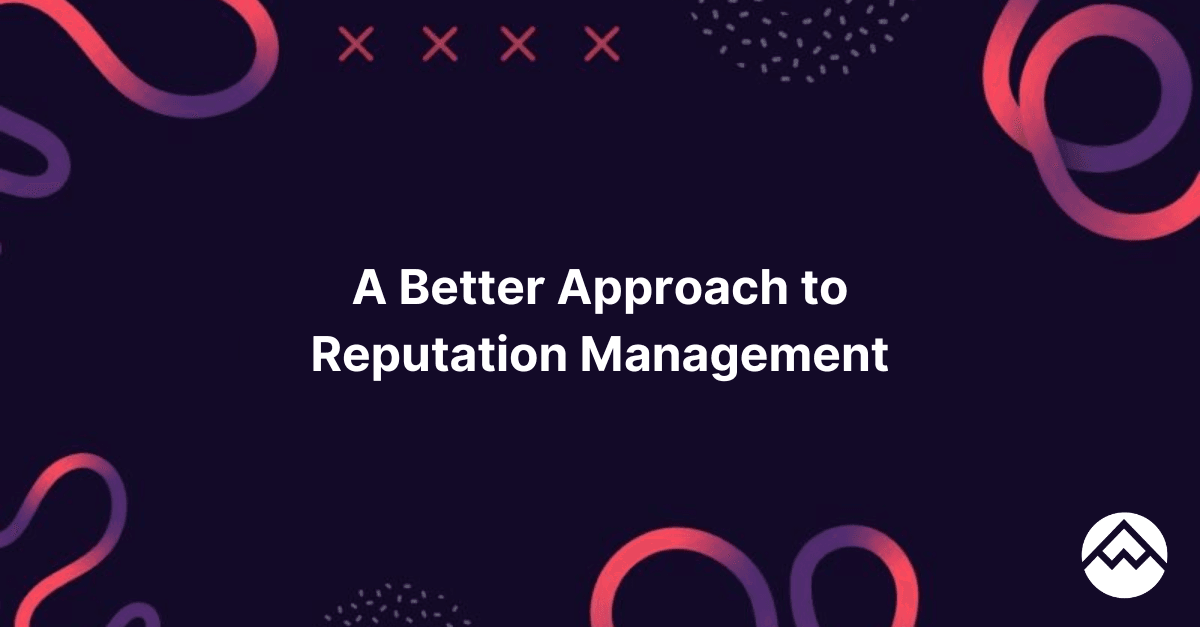
A Better Approach to Reputation Management
What’s your reputation worth?
For many public figures, corporations, and government agencies, the answer is likely the same; it’s everything.
Information travels quickly in our always-online world. A misleading or untrue narrative can threaten a brand’s credibility, financial stability, and most importantly — its people.
Traditionally, organizations have reacted to reputation attacks. This approach looks familiar: operating in crisis-response mode, backtracking on statements, leaning on costly crisis management firms, and scrambling to lock down systems.
It’s time to shift our thinking. Managing your reputation should be a proactive process that combines data intelligence, managing narratives, and purposeful artificial intelligence. A new approach will help brands, governments, and individuals navigate an increasingly complex internet landscape.
Why is reputation management so important?
Let’s take a recent example. Wendy’s CEO Kirk Tanner recently mentioned the idea of “dynamic pricing” on an earnings call. Very quickly, “dynamic pricing” became “surge pricing” in the media and on social media.
Suddenly, everyone assumed they’d be paying more for their burgers and fries at lunchtime. In reality — as Tanner clarified later on — the pricing represented discounts during quiet times, not surges during busy ones.
But the damage was done. The headlines, public backlash, and snarky memes had already made the rounds.
Reputation is becoming even more important — and more fragile. The USC Annenberg School spoke about the importance of reputation in its 2023 Global Communications Report.
“Today, consumers are making more demands, employees are more vocal and investors are scrutinizing every aspect of a company’s behavior,” the report reads. “Corporate reputation has become the determining factor for the products they choose, and the stocks they invest in.”
Reputation isn’t just about staying in the public’s good graces. It’s about the bottom line; reputation accounts for 63% of a company’s market value, according to research from Weber Shandwick.
Misleading and untrue narratives can be costly. Misinformation costs organizations an estimated $78 billion per year, per a report from ad cybersecurity firm CHEQ.
What makes reputation management difficult in 2024?
It doesn’t matter if you’re a corporation, government entity, or even The Royal Family — you’re probably grappling with the realities of social virality and misinformation.
According to a survey from PR consultancy firm Edelman, 46% of CMOs and CCOs say their organization has been affected by online and social media attacks.
These problems stem from a few different factors, all of which are interconnected:
The viral nature of the internet
We’ve likely all told our parents this a thousand times: “Don't believe everything you see on the internet."
Yet, society as a whole seems to forget this daily. Deceptive or ambiguous headlines go viral every day. All it takes is one headline or post to whip up a sandstorm of public sentiment. Almost no one can control a narrative once it gets moving.
The rise of Generative AI
Some experts believe that by 2026, 90% of online content will be AI-generated. Media manipulation and influence attacks will become cheaper and more scalable. Even unintentional misinformation from AI-generated content will rise, as well.
Disinformation for hire
There’s a growing market for so-called disinformation for hire, which involves private companies creating fake social media accounts and spreading false information. These companies typically lean on cheap (often offshore) manual labor and AI technology to work swiftly.
How can you proactively manage your organization’s reputation?
These issues aren’t going away, and there’s no silver bullet to alleviate them. Proactive reputation management starts with adjusting the way we think about how information spreads online:
View reputation through a data science and intelligence lens.
Traditionally, managing reputation was only seen as an issue for comms teams and crisis PR firms. It’s now something that touches the C-Suite, corporate affairs, cybersecurity, IT, and more.
Anyone responsible for reputation management should have access to robust data intelligence and gathering tools. That means we should also be educating employees on how to interpret and leverage this data to protect their organizations.
Incorporate context and understanding.
Now it might sound like I’m talking out of both sides of my mouth here:
Data is great. Data with context is even better.
Simply gathering large volumes of data isn’t enough. Company leaders need to invest in understanding how audiences spread narratives, identifying why those narratives are gaining steam, and discerning the credibility of sources. Combining a qualitative and quantitative approach is always the best way to do this.
Implement AI and ML to augment human analysis.
The old practice of analysts manually sifting through thousands of individual press clippings or social media posts and relying on complex “boolean” queries should be phased out. Narrative machine learning technology can help automate this process, analyzing large volumes of data to identify emerging trends. Human experts can use their time and effort to actually address or respond to the narratives in question.
It’s the case in almost every industry; let’s let the AI do the manual work, and preserve our people for higher-value work.
The future of reputation management
The online and social media landscape is already complex. It’s only going to become more convoluted.
But that’s no reason to tuck our tails. Proactive reputation management can empower businesses, governments, and public figures to reap the benefits of participating in the digital discourse — without worrying about scrambling to keep up.
The Internet will continue to evolve. It’s up to us to stay one step ahead.
Nick is the co-founder and CEO of PeakMetrics, which provides a narrative intelligence platform that helps enterprises and governments identify and combat emerging online narrative threats.ents identify and combat emerging online narrative threats.
Request a free report
Uncover emerging narratives around your brand, industry, and competition.
Sign up for our newsletter
Get the latest updates and publishings from the PeakMetrics investigations team.